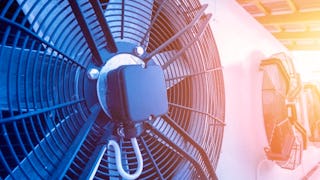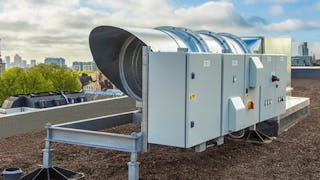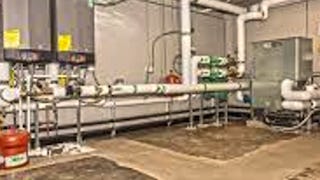HVAC (Heating, Ventilation, and Air Conditioning) systems form the backbone of climate control in various facilities, ensuring optimal indoor conditions for comfort, productivity, and health. An in-depth understanding of key components and design principles is crucial for professionals working in the field. This comprehensive overview aims to delve into the essential aspects of HVAC, covering high side and low side equipment, air handling units, chiller and cooling tower systems, chilled water pumping systems, piping and duct design, as well as external static pressure and insulation.
High side equipment plays a pivotal role in the HVAC system, focusing on the heat absorption and rejection process. Chillers, the cornerstone of this system, utilize different mechanisms such as absorption, centrifugal, or reciprocating, tailoring their operation to specific requirements. Complementing chillers are cooling towers, which dissipate heat from the system, ensuring optimal efficiency. Understanding the classifications and components of these systems is fundamental to their effective integration into HVAC designs. On the other hand, low side equipment involves air distribution and regulation. Air Handling Units (AHUs) are central to this function, ensuring the circulation and conditioning of air within a controlled environment. The classification of AHUs, such as single-zone, dual-zone, or multi-zone, provides flexibility in meeting diverse spatial requirements. Fan Coil Units (FCUs) further refine air temperature control, considering mounting types like horizontal, vertical, or ceiling-mounted units. Chillers, with their ability to cool water or other fluids, are critical for temperature regulation in HVAC systems. Understanding their classifications based on mechanism and their interplay with cooling towers enhances system efficiency. Cooling towers, categorized as natural draft, forced draft, or induced draft, contribute to the heat dissipation process, optimizing overall performance. AHUs regulate and circulate air, ensuring a comfortable indoor environment. Understanding their major components – filters, coils, humidifiers, fans, dampers, and controls – is essential for effective design and operation. Classification based on airflow and configuration, along with considerations for specific applications, provides a holistic understanding of AHUs. This system involves the circulation of chilled water through chillers, pumps, piping, and terminal units. Different distribution schemes, such as Constant Primary Flow or Primary Variable Flow, dictate water distribution. Important terminologies like static head, dynamic head, and Net Positive Suction Head (NPSH) are vital for efficient system design and operation. Efficient transport of fluids and air is facilitated through well-designed piping and duct systems. Understanding chilled water pipe sizing, duct sizing methods, and considerations for fittings and accessories ensures optimal system performance. Duct construction materials, insulation, and support systems are critical factors in achieving energy-efficient HVAC designs. External static pressure is a key parameter influencing the airflow and efficiency of HVAC systems. Proper understanding and management of this pressure are essential for maintaining optimal conditions. Insulation principles, encompassing heat transfer fundamentals and material selection, play a crucial role in mitigating energy losses and ensuring system efficiency. In conclusion, a comprehensive understanding of these HVAC components and systems is imperative for professionals in the field. From the high side and low side equipment to the intricacies of air handling units, pumping systems, and piping and duct design, a holistic approach ensures the successful design, installation, and maintenance of efficient HVAC systems tailored to diverse environmental needs. Ongoing advancements in technology and industry standards necessitate continuous learning and adaptation for HVAC professionals to stay at the forefront of this dynamic field. Target Learners: 1. Knowledge of Thermodynamics & Heat Transfer 2. Undergraduate students of Mechanical who are in either Vth, VIth, VIIth or VIIIth semester 3. Graduate students of Mechanical 4. Working professionals with B.Tech./B.E., in Mechanical 5. Diploma students of Mechanical
















